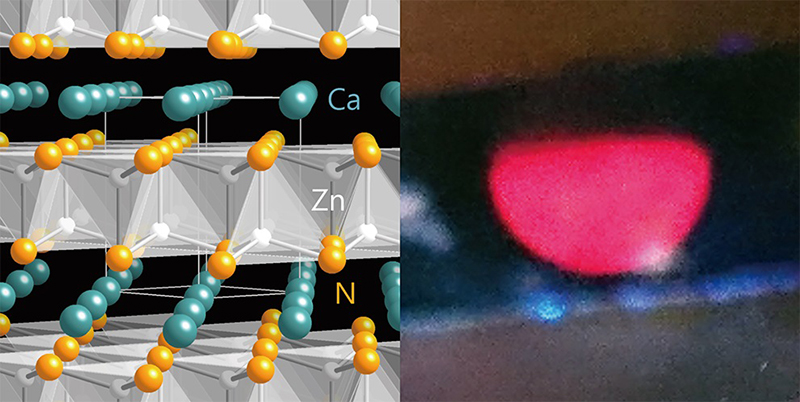Semiconductors have broad applications in electronics, photovoltaics and optoelectronic devices, such as light-emitting diodes. With such wide variety, the discovery of novel semiconducting materials is an issue of fundamental importance.
Kyoto University researchers Yoyo Hinuma and Isao Tanaka, along with colleagues from the Tokyo Institute of Technology and NIMS, recently announced in Nature Communications a trove of 21 promising nitride compounds that have not previously been reported as semiconductors, including the as-yet-unreported CaZn 2 N 2 , which has better electronic properties than most nitride semiconductor materials that have to date been utilized in industry.
Nitride semiconductors have many benefits over ones that utilize commonly-used elements like silicon and germanium. They can be environmentally friendly, consisting of elements that are abundant in the Earth's crust, and possess high electron mobility. Moreover, devices made of them are of relatively high chemical stability at high temperatures, which is advantageous for applications under severe conditions.
Very few compounds are promising within whole nitride family. The researchers employed an exclusion approach to find desirable compounds, where they first selected 583 existing and hypothetical nitrides that have certain crystal structures and then used first-principles screening on a supercomputer to identify 21 nitrides that are expected to be relatively stable and have useful electronic properties. Eleven of these had not been recorded in the world’s largest materials database while the rest were already known, validating the computational methods and screening criteria.
Among the identified nitrides, Ca 2 ZnN 2 and CaZn 2 N 2 are especially attractive because calcium and zinc are abundant in the crust and they have small electron effective mass that enhances electron mobility. CaZn 2 N 2 had not been reported previously; while Ca 2 ZnN 2 had been reported, the electronic properties had not been established experimentally. In a further experiment, the team obtained CaZn 2 N 2 via high-pressure synthesis and verified that the fundamental properties of CaZn 2 N 2 is, indeed, promising.
The 21 newly identified nitrides “widens the choice of nitride semiconductors that can be used in electronics, optoelectronics and photovoltatics,” the authors write. Their breakthrough also demonstrates that computational screening followed by targeted experiments is an effective way to accelerate novel materials discovery. (by Bolin Mao)

The crystal structure of CaZn 2 N 2 semiconductors (left), which glow in red (right)
Paper Information
【DOI】 http://dx.doi.org/10.1038/ncomms11962
【KURENAI Access URL】 http://hdl.handle.net/2433/215700
Yoyo Hinuma, Taisuke Hatakeyama, Yu Kumagai, Lee A. Burton, Hikaru Sato, Yoshinori Muraba, Soshi Iimura, Hidenori Hiramatsu, Isao Tanaka, Hideo Hosono & Fumiyasu Oba. (2016). Discovery of earth-abundant nitride semiconductors by computational screening and high-pressure synthesis. Nature Communications, 7:11962





